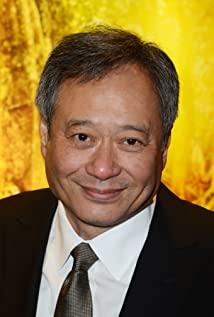Depends on the high frame, for "Gemini Killer", the feeling brought by the low frame is devastating.
If you don't understand the meaning of high-frame images (a brand new mode of image perception), the audience will inevitably accuse Ang Lee's film creations of beginning to rely on technological innovation, which is a kind of prediction of Jiang Lang's talents. And technology is always one of the original attributes of things like movies, which are industrial attributes. We initially saw images through technology. Today, in Lee Ang's revolutionary creation, we also re-perceive images because of technology.
Some viewers will blame the script for the movie. Indeed, if you look at the plot alone, there seems to be a lot of far-fetched things in the movie, and even the solution of the final image burden seems to be a temporary solution, and the final solution has not been completed. The movie just throws out the baggage, but does not provide the answer. The feeling brought by the plot therefore floated in the air without landing. What I want to emphasize here is that Ang Lee has actually provided a solution, and this solution is not entirely in the plot. The result of the technological innovation brought about by high-frame images is also included in this solution. . In other words, the "image language" itself is the ultimate solution to the problems raised by the script. Therefore, the film enters the concept of "meta" and is an excellent "metamovie."
1. Short focus: What the high-frame image brings is not "real", but "abstraction"-cancel the scene
High-frame images give the audience the first impression of clarity, or even "excessive clarity." Therefore, the first reaction of many people will think that what clarity brings is "truth", which is probably the biggest misunderstanding.
Taking the result of high-frame image presentation into the painting, the corresponding is: Photo-Realism painting, a highly realistic image presentation, even to the extent that it exceeds the perception of the naked eye-microscope-like clarity. On the surface, this kind of painting is a response to "realism" (realism points to reality), but in fact it is a kind of revelation of contemporary society (explained later). Realism has become an artistic technique that goes hand-in-hand with "abstraction" in "photorealistic art".
In Flussel’s post-modern photography theory, it is believed that color photos are more abstract than black and white photos, because color photos require more digital coding. Similarly, high-frame images are the same as photorealistic paintings, not so much To provide reality, it is better to say that it presents "abstraction" (beyond the perception of the naked eye; the more you transcend, the more abstract it is). For example, in the "Gemini Killer", in the high-frame ultra-short-focus image, the high-speed train traveling straight is distorted, forming a certain (abstract/unreal) angle.
This is not presented for the sake of "reality", this scene is a change of "perceptual distribution" in the sense of Lancière. When the first film in film history "Train in the Station" was released, the oncoming steam train frightened the audience. The culprit that the audience was afraid of at the time was the "illusion of reality." Nowadays, steam trains have become high-speed trains, and the clarity of images has reached an unprecedented level (even beyond the naked eye). The audience will never be afraid of this far more terrifying sport than ever before, because we have been trained in streaming media (and we can all make our own images through mobile phones) and all know that the images are "fake" (even if The destructive images of the world no longer bring the "illusion of reality"). The threat of "illusion of reality" has long been far away from modern audiences. The base point of the high-frame images for the audience’s perception is just above the “abstract” meaning (the director no longer needs to be firm on the route of creating a “real illusion”-the perceptual base of the image has been completely changed), and is different from the past Image perception based on "realism".
Classical video theory (the "real film" theory represented by Bazin) believes that short focus (at the same time showing the front and back scenes, such as "Citizen Kane") brings "realism", at least the realism of spatial unity. And when the audience faces the short-focus presentation in the high-frame images of Lee Ang, the foreground and the far back and middle shots are clearly presented in front of the audience, and even the license plates of the cars driving fast in the distant view are clear and undoubtedly— -A completely open "micro-perception", allowing the viewer to freely choose the viewpoint. In a sense, the high-frame image brings about the "cancellation of the scene." This is the presentation of "non-human"-not human eyes and human perception can do. At this moment, the camera only represents the non-human mechanical eye, not simulating the human eye, and the image as a whole is presented as a kind of "abstraction".
Deleuze suggests that people’s daily vision is a relatively narrow “generalized” cognitive response. We only see a simplistic world “outside” ourselves (externalize ourselves and the world), and only choose what we need Information, and ignore unnecessary information. That is to say, people's daily vision is exactly equivalent to the "zooming" behavior of traditional images. We extract and blur, and connect the extracted visual objects into a certain "purpose-oriented" rule to establish a cognitive system (and therefore human perception itself carries "moral issues"). Deleuze believes that this kind of "targeted" behavior of extraction and deletion embodies the universal pattern of politics. The rules of our empirical fascism (and others) are precisely the topology of this cognitive response. Therefore, the innate existence of the intensive cognitive model has led to the fixation of political vision. Under this innate narrow cognitive model, fascism will be followed by fascism. Only by gaining the "micro perspective" of "universality" (appreciating everything in the same way) and "differentiation" (affirming the arbitrary perspective of any object), the "internalization" of people and the world is equal (eliminating the boundary between the object and the self), and noticing any The existence time of things (non-human time), attention to arbitrary "potential" images, the future vision of politics will unfold in this "micro-perception" and be resolved. The short-focus ultra-definition in Ang Lee's "high-frame image" shows exactly what Deleuze enlightened: the full opening of micro-perception. This is also the above-mentioned "photorealistic painting" is a kind of revelation of contemporary society, and it is the parallel of "realism" and "abstraction".
I have no doubt that this full opening of "micro-perception" will appear in the images of Chinese artists, especially Ang Lee, who has always been good at incorporating oriental aesthetics into the language of images, because of the "internalized" perception mode suggested by Deleuze (A mode of canceling the boundary between the material and the self, which treats people and everything on the same basis, to remind the awakening of "inhuman" and "potential" time) It is precisely the theory that Chinese painting and Chinese aesthetic consciousness have been practicing. Mr. Zhang Guangzhi pointed out that Eastern aesthetic consciousness is "externalized" (equivalent to Deleuze's "internality"), a model that treats things as equivalent to me. Eastern consciousness never sets itself as an independent individual. Eastern culture It affirms the life and time of anything, just like the difference between Buddhist and Taoist consciousness and Christianity.
The "abstraction" presented by the high-frame images is a hint of a "non-human" "potential" perspective, which treats all the media inside the screen equally. This is a potentially inhuman awakening of time, and this “abstract” presentation cannot be treated in the same way as the “illusion of authenticity”. In other words, if you try to gain a path of empathic realism in the image, you are doomed to fail.
2. Telephoto: High-frame images completely change the perception mode of images-the overall appearance is "slow"
As mentioned above, the opening of "micro perception" brought about by high-frame short-focus images can be said to cancel the scenes in a sense. Because in the high-frame and short-focus presentation, everything in the front and back scenes and the landscape has the same status of existence. This is a perceptual mode that disobeys the daily vision of human beings, a kind of awakening of inhuman potential time in the sense of Deleuze (that is, the concept of "generation" suggested by Deleuze)—a democracy of arbitrary consciousness, total What it brings is not "realism", but the consciousness of image "liberation" based on "abstraction".
The changes brought about by high-frame images are not limited to this. The director's choice of film lenses is generally presented in two modes: "short focus" and "telephoto". Telephoto is mostly used to deal with the relationship between characters. For example, in the dialogue between the male lead and the female lead, the director still chooses to extract information through zooming, that is, to blur/exclude secondary information through telephoto to extract important information. The extraction and exclusion in the image seems bound to touch the famous argument of the movie manual: pushing the track will carry moral issues. Because any existence has its own right to exist, what telephoto brings is the orderly image behavior, which is "immoral."
And all this has changed in the high-frame image. In the movie, the director used a high-frame telephoto lens to zoom in a whole scene many times. This is a common technique in the New Wave, but the difference from the presentation of low-frame images is that low-frame images will inevitably lead to freezes during fast zooming-a frame-drawing effect similar to Shaw's processing action movies. That is, in low-frame images, fast zoom is usually felt as a "cut" effect. And this kind of “cutting” is matched with the splitting of the frame in the lens movement (frame drawing effect), and the audience directly feels the speed of movement (such as Duan Yu’s Limbo microwave), and the effect of drawing the frame brings a sense of speed. In high-frame images, because the number of frames is sufficient in a predetermined gap, the rapid movement of the lens and even the focal length brings a sense of continuity-"zoom is manifested as zoom itself." In the audience's perception, the movement of high-frame telephoto images has become a technique similar to Wong Kar-wai's "frame-drawing and overprinting" technique, and the overall appearance is slow. Therefore, I am eager to feel a certain kind of sports stimulation in "Gemini Killer" and it is doomed to fail. The overall image movement appears to be "slow".
And in this slowness, zooming brings precisely the equal existence of various media in the space. Each focal plane has the fairness of existence, because the clear presentation of each focal plane, each focal plane in the space brings a certain existence. In other words, the high-frame image brings an absolute sense of space. This is a conclusive existence of space.
In the high-frame image, the short-focus awakens the potential time with certainty; the long-focus awakens the space with certainty. Because of these changes, high-frame images have formed a new perception.
three. The problems raised by the script can be solved by the "language" of the image
The changes in the perception of various lenses by high-frame images have brought about a political solution in the sense of Deleuze. The script of "Gemini Killer" presents a model similar to traditional Hollywood action movies, such as the 007 series. This type of action movie will raise a new problem every time, solve it once in each round, and can never completely solve the problem, so the 007 series can be infinitely derived. Unlike traditional Hollywood action film sequences, Ang Lee provides a way to end this series. This cannot be accomplished by the script/plot. It must be "solved" through the "generating" nature of the image itself and the language of the image itself. In Deleuze's sense, it means awakening "potential perception" and "inhuman time". Through the above prompts, Ang Lee has provided a real solution through the language construction of high-frame images. A Deleuze-style "generative" political liberation consciousness.
Therefore, Ang Lee provides a solution to the problems that seem to be unsolved in the plot. This approach is similar to Mallarmé’s poetry: in order to liberate the people from the (political) “grand ceremony”, one must Introduce "infinite emptiness" to end the state of dumb speech of the people.
In order to remind the solution contained in this language, Ang Lee specially arranged some images in the script, such as the "mute" innocent people killed after tampering with the information-"ghosts". The ultimate dilemma of these ghosts is no The power/ability to speak, the voice is arbitrarily tampered with by those in power to conform to the grand discourse of politics, and is arbitrarily buried.
And what Xiaoke mentioned, as if there is a ghost of his own looking at him outside of himself, is just a hint of the opening of a sense of "internalization" in the sense of Deleuze. See oneself through a Chinese painting style omniscient bird's-eye view. And the consciousness of this ghost is inhuman consciousness. The generalization of consciousness brought by the mass-produced Xiaoxiaoke is a symbol of the "universal" of perception, which is exactly the same as the intention brought by the high-frame and short-focus.
Furthermore, when oneself and the copy of oneself move relative to each other, the objective perspective brought by the camera is a kind of complete "cinematization", because it no longer belongs to oneself and any possibility of self-consciousness, and appears as a complete " The "fractured" viewpoint of non-human, a kind of "potential observation".
Most importantly, perceiving this new image requires a major premise, which is what the male protagonist emphasized at the beginning, "the most vigilant thing is (inherent) experience."
View more about Gemini Man reviews











